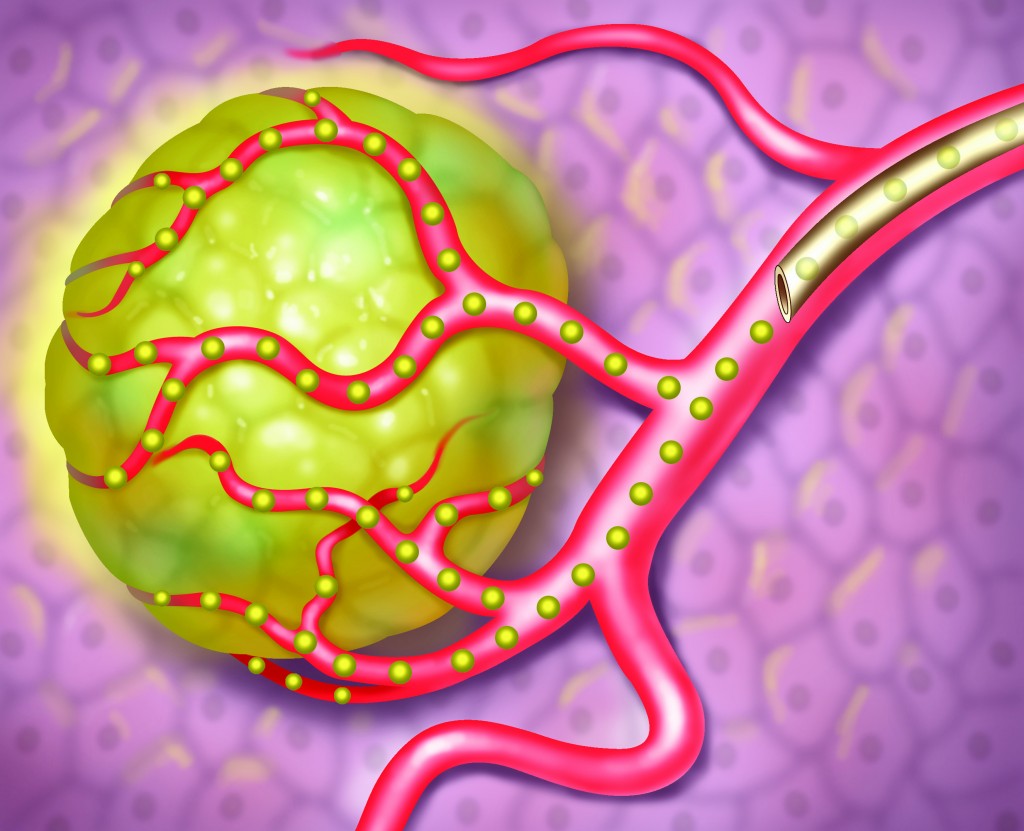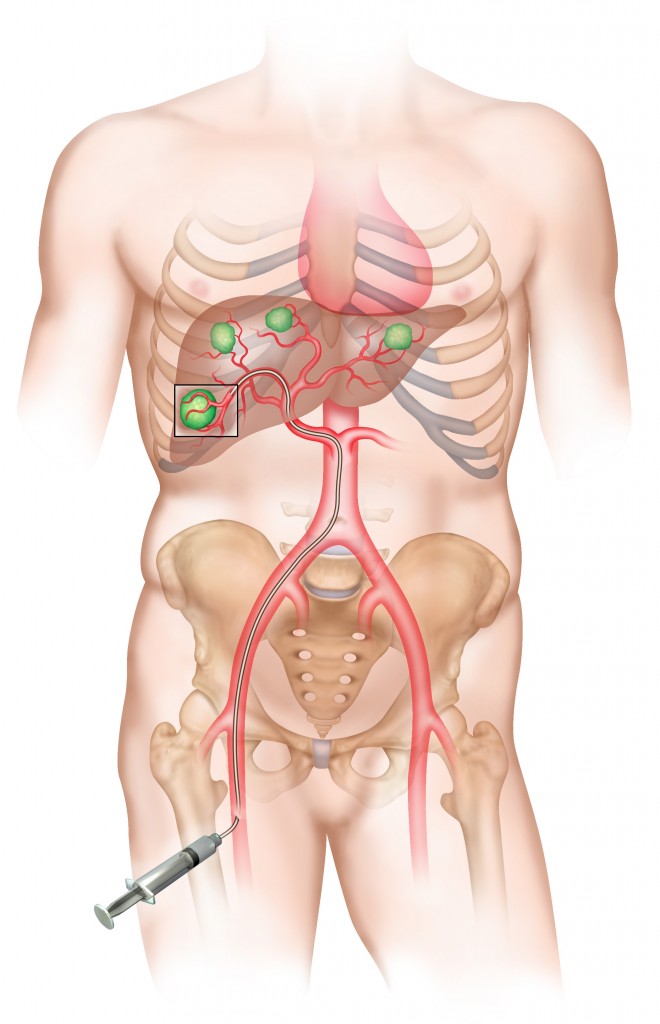SIRT stands for Selective Internal Radiation Therapy, sometimes also known as radioembolisation. This is a highly specialized treatment, best performed by experts.
SIRT involves the injection of tiny microspheres, which contain a radioactive substance (yttrium-90), into the blood supply of cancers in the liver. The microspheres (SIR-Spheres, manufactured by SIRTEX Medical, an Australian company) are therefore deposited inside the cancers, and the radiation treatment goes to work. Using this technique, very high doses of radiation can be selectively delivered to the target cancers.

The procedure is performed by an interventional radiologist using local anaesthetic and some sedation. A small catheter is inserted into the artery in the groin and then into the arteries supplying the liver.

Patients who have SIRT require two procedures, which are often spaced about two weeks apart:
Procedure 1 – “Workup” or “Mapping” procedure
The catheter is positioned in the liver from the groin entry site. The blood supply to the liver and the cancer is carefully mapped out, and a test dose of a harmless radioactive tracer substance is injected. A scan is performed immediately after the procedure to ensure that the tracer ends up in the correct areas of the body. If this scan is satisfactory then it is safe to go ahead with the second procedure, which will then be scheduled in 1-2 week’s time.
Procedure 2 – “Treatment” procedure
The catheter is positioned in the liver from the groin entry site. The radiation microspheres are injected into the blood supply of the liver cancer. A scan is performed immediately after the procedure to ensure that the radiation treatment has been successful.
